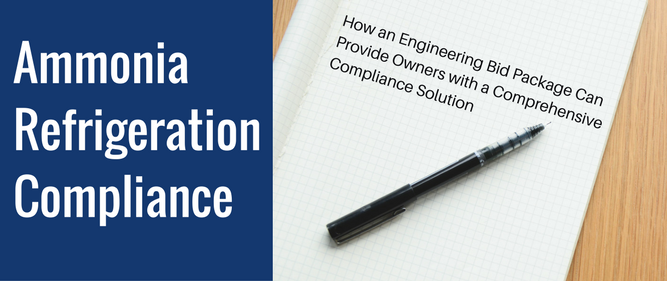Compliance audits for ammonia refrigeration are increasingly more detailed with regulatory standards maturing every year. Which begs the question: How prepared or risk-prone do you want your facility to be?
Compliance is just one of several issues on the agenda this week for the regional conference hosted by the Central Florida Chapter of the Refrigerating Engineers & Technicians Association (RETA). In addition to refrigeration maintenance and operation, attendees at the Central Florida Ammonia Refrigeration Regional Conference will also focus on the importance of compliance with regulators like OSHA.
As commercial refrigerants continue to be scrutinized by government regulators and others, process safety management (PSM) and compliance are only becoming more critical to food and beverage processors.
Strict compliance standards call for attention to detail
Audits — and how to respond to them — have changed significantly in recent years. I’ve worked with a number of owners who are proactive about compliance, but I’ve also worked with just as many who are surprised by how rigorous standards have become over the years.
Given the current International Institute of Ammonia Refrigeration (IIAR) standards, bringing your refrigeration system fully into compliance now means thinking beyond just the surface symptoms flagged by a third-party auditor — you have to go deeper and consider the impact on the entire system.
Understandably, the most commonly flagged compliance issues are related to ammonia safety such as ventilation and safety relief piping systems — areas where you cannot afford to cut corners. Like the regulations that govern them, the methods to address these issues have evolved as well.
The traditional approach vs. a detailed solution
After an compliance audit, you may be accustomed to the usual approach where you hire a contractor to:
- Assess your audit results
- Provide a laundry list of recommendations
- Price quick solutions accordingly
But an engineering bid package provides comprehensive, detailed solutions to ensure you’re meeting all the compliance standards thoroughly. A bid package includes designs and drawings to address systemic issues in their entirety, instead of simply putting a bandage on the symptoms. Like overall system design, a bid package allows you to see the application of compliance regulations and identify the subsystems involved.
In the past, you may have gotten by with increasing your relief header size or increasing ventilation fan size, but today’s standards are much more robust with detailed compliance items: Once you address one flagged issue, you must ensure other related aspects are in compliance as well.
Two main benefits to an engineering bid package for addressing compliance issues:
- Comprehensive coverage for system compliance by category
- Enhanced comparable market pricing for installed solutions
Not only does a bid package design cover all your bases, but it also makes it easy to seek out competitive bids. You can easily use those drawings to submit requests for quotes (RFQs) and get an apples-to-apples comparison rather than vague, high-variance bids.
Example: ventilation and detection systems
We all know that your mechanical rooms need to have properly sized ventilation fans in the event of an ammonia leak, and according to the latest IIAR standards, you must have fans sized large enough to exchange the volume of machine room air a minimum of 30 times every hour in the event of an emergency.
Here’s the catch: Many owners still rely on satisfying that one requirement alone to ensure their ventilation system is in compliance — but today’s standards go well beyond that.
For your ventilation system to be fully compliant you need to have a number of things, including:
- Appropriately sized fans
- Detection equipment that communicates the level of a leak
- Fans that automatically turn on at specified levels of detection
- Equipment that automatically turns off at specified levels of detection
- Manual switches to turn off equipment and turn on fans in an emergency
- Alarms that are tied to the ventilation fans and the detection system
- An area away from the mechanical room that gets notified during a leak
- The correct amount of fresh air that is brought in during a leak
Plus, you must consider a variety of other related factors. For example, if your facility is located in a colder climate, you need to have approved heaters to warm fresh air before it is brought in to help ventilation.
You may be thinking, “I already have manual switches for my fans and equipment.” But are they the right kind of switches? Or you may have fans and a detection system already, but if the two aren’t set up to communicate with each other automatically, that’s a violation.
Compliance isn’t just about checking off a few boxes if you want to avoid the domino effect today’s standards can trigger. Putting off these compliance issues during your routine audits can also cost you big time if federal agencies comes knocking at your door. OSHA and EPA audits occur on short notice and can carry the weight of hundreds of thousands of dollars depending on what they find. An engineering bid package can mitigate these risks and ensure your facility is completely compliant, for the safety of your staff and the health of your business.
Still have questions? Want to chat about compliance needs at your facility? Email me at jcarryl@stellar.net.




